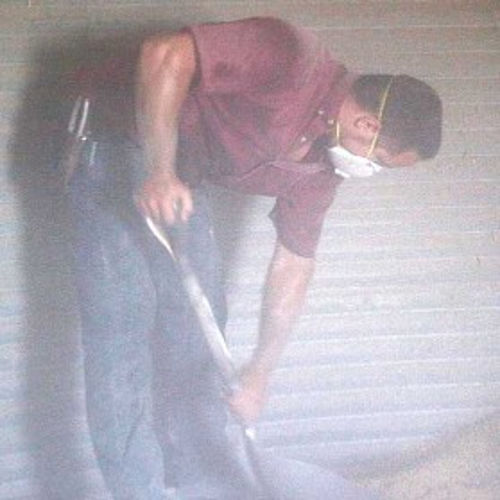By Dee Jepsen
This year, due of the wet conditions we experienced during the spring, Fusarium head blight, also known as head scab, developed in a few localized areas of the state. Grain harvested from scab-affected fields is often contaminated with vomitoxin and other mycotoxins, because the disease and toxins go hand in hand. Severely affected kernels are usually small, shriveled, lightweight, covered with pinkish-white fungal mycelium, and most importantly, heavily contaminated with mycotoxins. Compared to healthy kernels, scabby kernels break easily during grain harvest, transport, and other forms of grain handling, increasing the number of fine particles and the amount of dust in the grain lot. Dust in grain harvested from scab-affected fields contain a mixture of tiny pieces of kernels, spikes, and straw, all of which are contaminated with vomitoxin, as well as pieces of fungal mycelium (mold).
Breathing grain dust can have adverse effects on the human respiratory system. When the dust is also suspect of mycotoxins, it is especially necessary to take precautions.
Wearing a disposable, 2-strap N95 mask (respirator) helps protect the worker from breathing in dusty, moldy and toxic substances. This type of personal protection equipment will filter out at least 95% of the dust and mold in the air. The 1-strap mask does not have this level of protection, and is basically worthless in agricultural environments.

How to wear the N95 correctly
Make sure you wear the N95 whenever working in dusty and moldy environments, especially at the grain storage and handling bins.
- The mask should have a tight fit over your nose and mouth, and requires contact with smooth skin. Facial hair, eyeglasses and certain dental appliances can prevent the mask from making a seal around your face.
- The N95 respirator is available in many sizes and various configurations, making sure the proper fit can be made.
- Always use both straps to hold the mask in place and prevent air from leaking in around the edges.
How to test your respirator for proper fit
Ideally the N95 should be fit-tested for each worker. Once a fit-test is performed, the worker will know which type provides the best fit. Then before each use, perform a seal test to be sure the mask fits snugly
Place both hands completely over the mask and inhale sharply. The mask should pull into your face. If you feel any air leaking around your face or eyes, adjust the nosepiece and straps for a tighter fit.
Place both hands completely over the mask and breathe out sharply. Be sure to cover the exhalation valve if your mask is equipped with one. No air should leak out of the mask if it fits properly. If air leaks, adjust the nosepiece and straps for a tighter fit.
When to throw out the N95 mask
Consider the N95 respirator similar to the air filter in your vehicle.
- When the mask gets clogged beyond a comfortable condition, replace it with a new mask. Likewise, if the inside of the mask becomes dirty, dispose of it.
- Replace masks if they become wet, torn or have stretched out straps
- N95s are made to be disposable, they cannot be cleaned or disinfected.
There are no recommendations for how many minutes or hours a mask will last in agricultural environments. A face mask filter is rated to absorb a total mass of 200mg, however on the farm, the time to reach this level is not known. Each respirator will be affected by personal hygiene, breathing resistance and density of the air contaminants. Each job will vary - as will the heat, humidity and other environmental conditions while performing the job.
A 2-strap N95 respirator is the best form of protection from moldy and dusty grain dust. Protect yourself and all workers exposed to wheat dust during the Ohio wheat harvest.